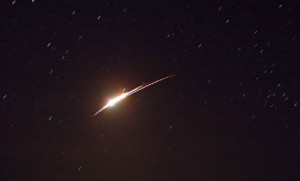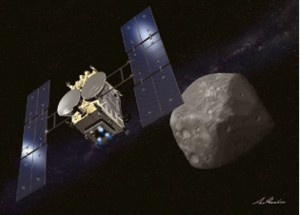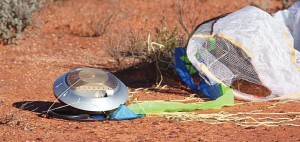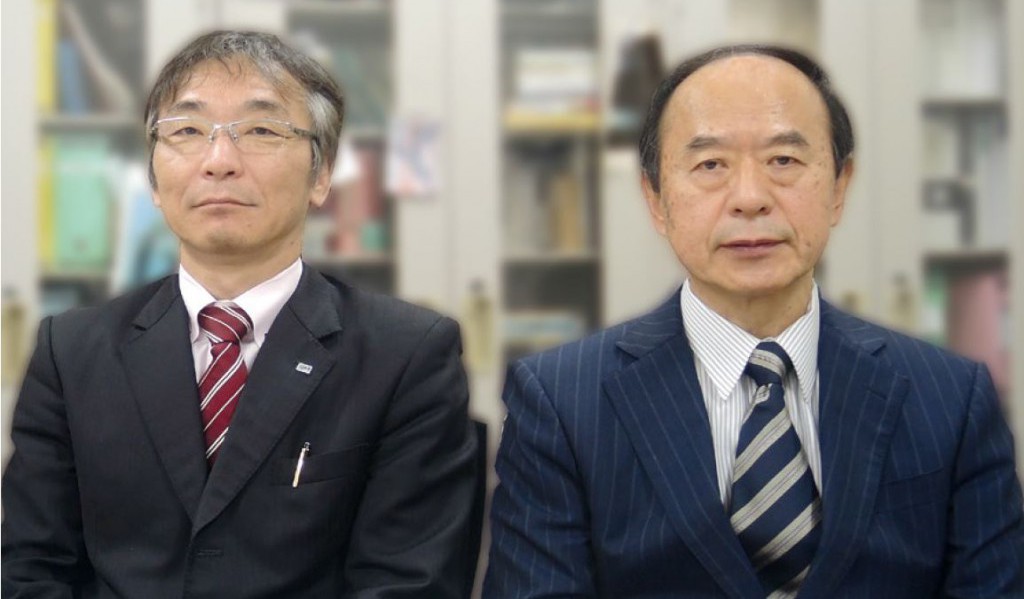This post is also available in: Japanese
Working with Private Enterprises Based on Space Technologies and the Lessons Learned from Hayabusa
On June 13, 2010, the first asteroid explorer Hayabusa returned to Earth safely. Having made a great impression on not only the Japanese public but also many other people around the world as well, this event is still fresh in the memory. It was so impressive that a film featuring this project was produced. Following on from this success, Hayabusa 2 was launched on December 3, 2014.
Just one year later, on December 3, 2015, Hayabusa 2 used a method known as an Earth swing-by to change its path and accelerate towards its destination asteroid —called Ryugu— with the aim of bringing new results back to Earth. Japan’s space research and development projects, including Hayabusa and Hayabusa 2, are supported by the Japan Aerospace Exploration Agency (JAXA).
For this issue’s “Executive Guest”, Hisaharu Obinata, President and CEO of ULVAC, Inc., visited Dr. Hitoshi Kuninaka, a professor at the Department of Space Flight Systems, Institute of Space and Astronomical Science, JAXA (director of the Space Exploration Innovation Hub Center), who developed the ion engine, one of Hayabusa’s core technologies, and asked him about his valuable experience with a focus on space research and development.
- Guest(left)
Dr. Hitoshi Kuninaka
Professor at the Department of Space Flight Systems,
Institute of Space and Astronautical Science
Director of the Space Exploration Innovation Hub Center,
Japan Aerospace Exploration Agency (JAXA) - Interviewer
Hisaharu Obinata
President and CEO, ULVAC, Inc.
*All product trademark notices are omitted in this document
Introduction

Planetary exploration technologies that employ an unmanned space probe have been developed in stages,
as described below.
The first stage was the “fly-by,” which involved the unmanned space probe observing a target celestial body while passing near to it. The second stage was the “rendezvous,” which involved the probe approaching the target celestial body and observing it while adjusting speed and traveling along the same orbit as the target.
The third stage was “landing,” which involved the probe descending to the surface of the target celestial body to conduct observations. The most recent stage is the “sample return,” which involves the probe bringing substances collected from the target celestial body back to Earth for analysis.
Hayabusa left a lasting impression on people around the world and attracted considerable attention by returning to Earth safely despite having to overcome a number of problems. In terms of its significance in the development of asteroid exploration technologies, it was the world’s first explorer to successfully return a sample from a difficult to approach asteroid. It is said that the ion engine made a significant contribution to the Hayabusa’s long journey through outer space and its eventual successful return to Earth.
Being able to return many samples from an asteroid, as Hayabusa succeeded in doing, fulfills the purpose of space research and development by helping to clarify the unknown —such as the origin of life, the structure of the universe, and the beginning of the solar system— and to get closer to learn about life, including humanity, and nature on Earth.
The Role of the Project Manager:To Encourage All Individual Project Members to Display Their Abilities to the Full and Make Decisions by the Deadline
Obinata: The Hayabusa project brings together a wide range of specialized technologies. Since the project integrates such wide-ranging technologies, I imagine that many of them are not necessarily your specialty. Can you explain what you try to do when leading such a project team?
Kuninaka: It’s true that there are many things I don’t know (laugh).
What I try to do is to remind myself that first of all there are no supermen that are familiar with absolutely everything and that I am no superman myself. Given this, I tried to respect the judgment of those working at the project site as much as possible. I listened to their opinions in order to create an environment that would allow individual project members with specialized knowledge to display their abilities to the full.
Obinata: When I assumed the presidency of ULVAC, its employees were not very driven. Feeling the need to vitalize them, I strove to delegate authority in order to draw out their independence. I was extremely encouraged when I learnt that abilities of individual members to the maximum extent possible.
By the way, project managers have to decide a lot of things in a short period of time, don’t they?
Kuninaka: The duration of the Hayabusa 2 project was fixed, and its team members faced a mountain of tasks that needed to be completed at the climax of the project.
Since nothing moved forward unless I made a decision, my job as the project manager was to make decisions quickly each day. This has something in common with corporate management. Corporate managers have to make decisions over a long period of time every time a problem arises.
They have to examine all of the resources —including the time, personnel, and budget available— and all of the parameters closely, and then select the best of them.

In this project, however, the launch was scheduled for December 2014, so we had to create something acceptable by that deadline. Given this, we had to choose a maximum of one or two options from among the many candidates, put all of our resources into them, and solve any problems as inexpensively as possible in a short period of time. I could not place responsibility for the results on the project members, so I felt that my job was to make the final decision. In this sense, the job always put me in a tense situation.
Obinata: A company also employs many capable experts in fields such as accounting, finance, and development. If these experts are unsure what to do despite having considered the issue long and hard, the president should make the decision. In all other circumstances, I generally have no worries about leaving everything else to them.
I presume that it is extremely difficult for you to make a final decision on complicated issues if there are many stakeholders involved, and that this can put you in a difficult position.
Kuninaka: That’s right. Since we had only three and half years before the rocket’s launch for the Hayabusa 2 project, I had to make decisions on many things during that period.
It proved difficult to obtain the budget we requested for the Hayabusa 2 project. In particular, we had a hard time because projects promoting science and technology faced difficulties in those days. In any event, we were not allowed to work slowly.
For the first Hayabusa project, I worked purely as an engineer, but for the Hayabusa 2 mission, I ended up taking on a managerial position.
Exploration of an S-type Asteroid by Hayabusa and a C-type Asteroid by Hayabusa 2

Obinata: The first Hayabusa targeted the Itokawa asteroid, while Hayabusa 2, which is currently still in outer space, is targeting the Ryugu asteroid. How did you decide on these targets?
Kuninaka: There are actually several types of asteroids. Those close to Earth are classified into two major categories: S-type asteroids and C-type asteroids. The “S” in “S-type” stands for “stone.” These stony asteroids consist mainly of substances such as iron silicate and magnesium silicate. The “C” in “C-type” stands for “carbon,” which also includes organic substances and water, so C-type asteroids are carbonaceous.
The first Hayabusa was sent to Itokawa, an S-type asteroid, while the target of Hayabusa 2 is a C type asteroid.
The mission of the first Hayabusa was to prove whether Japan was capable of performing a round-trip asteroid exploration using only its own technology, so the target could be anything as long as it was an asteroid. Most of the asteroids that are easily accessible from Earth are of the S-type, so we selected an S-type one. The current mission, however, is to send a probe to a C-type asteroid. In fact, C-type asteroids that are close to and easily
accessible from Earth are extremely rare, but one of these is called “Ryugu.” The United States and the European Union are planning to reach other carbonaceous asteroids.
Obinata: When did you decide on the current target?
Kuninaka: The project was launched in 2011.
Saito: That was one year after the first Hayabusa returned to Earth, wasn’t it?
Kuninaka: Yes. The work of finding new asteroids is also underway throughout the rest of the world, and if a new one is discovered, it is immediately analyzed to identify what type it is. At its own expense, JAXA has astronomical observatories observe asteroids that have just been discovered but have not yet been analyzed. For the current project, we started searching for C-type asteroids as long as ten years ago.
| Ryugu | イトカワ | |
| Date of discovery | May 10, 1999 | September 26, 1998 |
| Size and shape | Approx. 900 m in diameter; almost spherical | 535 m × 294 m × 209 m; shaped like a sea otter |
| Rotation period | Approx. 7 hours and 38 minutes | Approx. 12 hours and 8 minutes |
| Orbital period | Approx. 1.3 years | Approx. 1.52 years |
| Orbital radius | Approx. 180 million km | Approx. 198 million km |
| Light reflectance | Approx. 0.05 | 0.25 on average |
| Color | Blackish | Gray (portions that have not suffered space weathering appear whiter than the surrounding portions) |
| Spectral type | C-type (it is presumed to contain water, organic substances and minerals) | S-type (minerals such as olivine, pyroxene, plagioclase, troilite, taenite, and chromite) |

